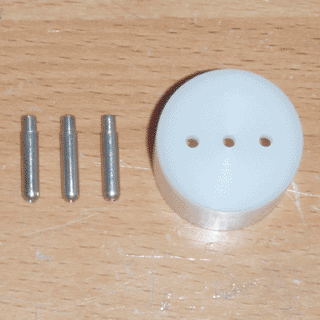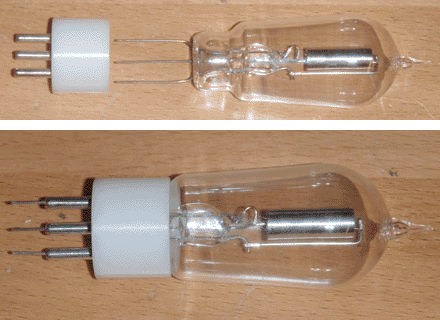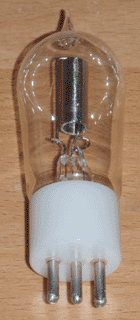


Previous vacuum tubes used loose nickel leads, which had to be soldered semi-permanently into the device they were used in. This was easy to assemble, but becomes a problem in the event of tube failure. A more satisfactory solution is to have each tube connected to a plastic base with pins, so that it can be removed and replaced without the use of any tools. The base would also protect the leads from bending or twisting, which if severe enough may damage the hermetic seal. I decided to make such a base for my most recent diode, which as of today is still functional.
I started by turning the pins from 1/8 inch copper rod. To improve the surface finish, I burnished them with a mild steel bar after filing the round end to shape. I then drilled a 1/16 inch hole through each pin axially, washed the pins with soap and water, then plated them with nickel using the process outlined in the previous article. While the pins were being plated, I milled the base out of a 3/4 inch length of 1 inch Delrin bar. When the plating was finished, I pressed the pins into the base, secured the tube with hot glue, and soldered the leads to the pins.
This project was straightforward with the exception of two parts. First, drilling through each pin took an inordinate amount of time due to the tendency of copper to grab and break small drill bits. In the future I will use copper tubing instead of rod. Secondly, I failed to account for the thermal conductivity of copper, so as I soldered the pins the base began to melt. I was able to correct the positioning of the pins after the fact, but for future tubes I will put a soaked paper towel around the base of the pins during the soldering process.